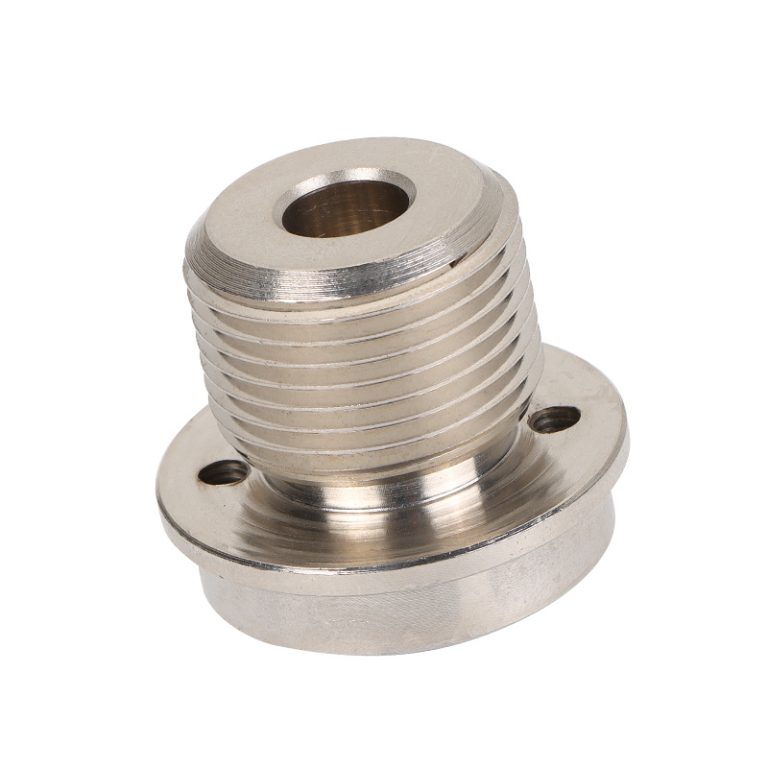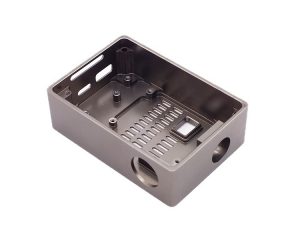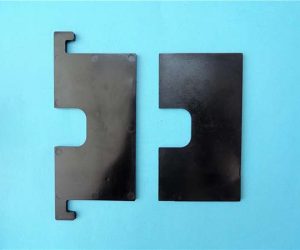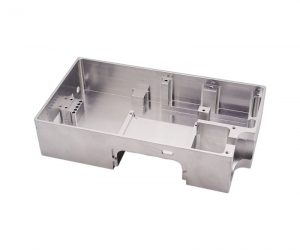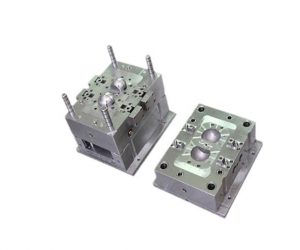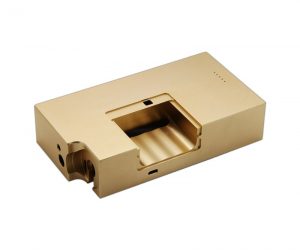Introduction
In today's rapidly evolving technological landscape, 3D printing has emerged as a revolutionary force, reshaping the way we create, innovate, and bring our ideas to life. The search query "3D Printing Near Me" is not just a simple phrase; it represents a gateway to a world of limitless possibilities. Whether you're an entrepreneur with a groundbreaking product concept, a designer seeking to push the boundaries of creativity, a hobbyist with a passion for crafting unique items, or a professional in need of customized tools and prototypes, the proximity of 3D printing services can be a game - changer.
3D printing, also known as additive manufacturing, has come a long way since its inception. What was once a niche technology confined to research laboratories and large - scale industrial applications has now become more accessible, with local 3D printing services popping up in neighborhoods, business districts, and educational institutions. Yigu Technology accessibility has democratized the manufacturing process, putting the power of creation directly into the hands of individuals and small - to - medium - sized enterprises.
Understanding 3D Printing
The Basics of 3D Printing Technology
3D printing, also known as additive manufacturing, is a revolutionary technology that has been transforming the manufacturing and prototyping landscapes in recent years. At its core, 3D printing is the process of creating three - dimensional objects from a digital model by adding material layer by layer. This is in contrast to traditional manufacturing methods, which often rely on subtractive processes (such as cutting, milling, or drilling away material from a larger block) or formative processes (such as casting or molding).
The basic principle of 3D printing begins with a digital design. This design can be created using computer - aided design (CAD) software, where designers can precisely define the shape, size, and internal structure of the object they want to create. Once the digital model is ready, it is sliced into thin layers by specialized software. Each layer represents a cross - section of the final object, and the thickness of these layers can vary depending on the printer and the desired level of detail. For Yigu Technology example, in a high - resolution 3D printer used for creating intricate jewelry or small mechanical parts, the layer thickness might be as thin as 0.05 mm, while for a large - scale 3D printer used in construction, the layer thickness could be several centimeters.
After slicing, the 3D printer reads the sliced data and starts the printing process. Different 3D printers use different technologies to deposit material layer by layer. One of the most common and accessible 3D printing technologies is Fused Deposition Modeling (FDM). In an FDM printer, a spool of thermoplastic filament (such as PLA, ABS, or PETG) is fed into an extruder. The extruder heats the filament until it becomes molten and then extrudes it through a nozzle. The nozzle moves in a precise pattern, depositing the molten plastic layer by layer onto a build platform, gradually building up the object.
Another popular 3D printing technology is Stereolithography (SLA). SLA printers use a vat of liquid photopolymer resin. A laser or a digital light processing (DLP) system is used to cure the resin layer by layer. The laser or DLP projects a pattern of light onto the surface of the resin, causing the resin in that area to solidify. As each layer is cured, the build platform is lowered, and a new layer of resin is applied and cured, until the entire object is formed.
Selective Laser Sintering (SLS) is yet another 3D printing technology, especially useful for creating parts from powdered materials such as nylon, metal, or ceramic. In an SLS printer, a high - power laser is used to sinter (fuse) the powder particles together. The laser scans the surface of a bed of powder, melting and fusing the particles in the areas corresponding to the cross - section of the object being printed. Once a layer is complete, a new layer of powder is spread over the bed, and the process is repeated.
The 3D printing process typically involves four key steps:
- Modeling: This is the initial step where the 3D model of the object is created. As mentioned earlier, CAD software is commonly used for this purpose. However, other methods such as 3D scanning can also be used to create a digital model of an existing object. For instance, in the medical field, 3D scanners can be used to create a detailed model of a patient's body part, such as a skull or a joint, which can then be 3D printed for surgical planning or the creation of custom - fit implants.
- Slicing: After the model is created, it is imported into slicing software. The slicing software analyzes the 3D model and divides it into a series of thin layers. It also calculates the optimal printing parameters for each layer, such as the extrusion speed, temperature (for FDM printers), and the amount of support material needed (if any). Support material is often required for overhanging or complex geometries to prevent the printed object from collapsing during the printing process.
- Printing: This is the stage where the 3D printer brings the digital model to life. The printer follows the instructions provided by the sliced data, depositing material layer by layer according to the predefined patterns. During the printing process, it's important to monitor the printer to ensure that there are no issues such as clogged nozzles (in FDM printers), uneven resin curing (in SLA printers), or improper powder spreading (in SLS printers).
- Post - processing: Once the printing is complete, the printed object often requires some post - processing steps. These can include removing the support material, sanding or polishing the surface to improve its smoothness, and in some cases, heat - treating or coating the object to enhance its mechanical properties or appearance. For Yigu Technology example, metal 3D - printed parts may need to be heat - treated to relieve internal stresses and improve their strength, and 3D - printed plastic parts may be painted or coated to give them a more finished look.
3D Printing vs Traditional Manufacturing: A Detailed Comparison
When considering whether to use 3D printing or traditional manufacturing methods, it's essential to understand the differences between the two in various aspects. The following Yigu Technology table provides a detailed comparison:
| Aspect | 3D Printing | Traditional Manufacturing |
| Cost | - For small - batch production (less than 1000 units), 3D printing can be more cost - effective as it eliminates the need for expensive molds or tooling. For example, in a small - scale jewelry business, creating a unique piece using 3D printing may cost only a few dollars in material and energy costs, while traditional casting methods would require the creation of a mold, which could cost hundreds of dollars. - However, for large - scale production (more than 5000 units), traditional manufacturing often has lower per - unit costs due to economies of scale. For instance, a large - scale plastic toy manufacturer can produce millions of units at a very low cost per unit using injection molding, while 3D printing the same number of toys would be prohibitively expensive. | - High initial costs for setting up production lines, creating molds, and purchasing specialized equipment. For example, in the automotive industry, setting up a production line for stamping metal parts can cost millions of dollars. - Low per - unit costs for high - volume production. As the number of units produced increases, the cost per unit decreases significantly due to the spreading of fixed costs over a larger number of products. |
| Personalization | Allows for high - level personalization. Each printed object can be customized based on individual requirements without significant additional cost. For example, a footwear company can use 3D printing to create shoes that are customized to an individual's foot shape, providing a perfect fit. | Limited personalization options. Customizing products often requires significant re - engineering of molds or production processes, which can be time - consuming and expensive. Mass - produced products are usually standardized to keep costs down. |
| Complex Design | Can easily create complex geometries and internal structures that are difficult or impossible to achieve with traditional manufacturing methods. For example, in aerospace engineering, 3D printing can be used to create turbine blades with intricate internal cooling channels, improving their efficiency. | Constrained by the limitations of the manufacturing process. Complex designs may require multiple manufacturing steps, special tooling, or be unfeasible altogether. For example, creating a part with an internal lattice structure using traditional machining would be extremely challenging. |
| Material Utilization | Minimizes material waste as it adds material only where needed. The material is deposited layer by layer, resulting in very little waste. For example, when 3D printing a complex metal component, the amount of material used is precisely controlled, and any unused powder (in SLS printing) can often be recycled. | High material waste in subtractive manufacturing processes. For example, in machining a metal part from a solid block, a large amount of material is removed and discarded as chips, resulting in significant waste. |
| Processing Convenience | Simplified process for small - scale production. There is no need for extensive setup or multiple manufacturing steps. Once the digital model is ready, the object can be printed directly. For example, a hobbyist can create a custom - made tool in their home 3D printer without having to go through a complex manufacturing process. | More complex process for small - scale production. It often involves multiple steps such as machining, assembly, and finishing, which require specialized skills and equipment. |
| Production Speed | Fast for small - batch production and prototyping. A simple 3D - printed object can be produced in a few hours, and even complex objects can be completed within a day or two. For example, a product designer can quickly print a prototype of a new product concept to test its form and function. | Slow for small - batch production due to the need for setup, tooling changes, and multiple manufacturing steps. However, it can be very fast for high - volume production once the production line is optimized. For example, a large - scale electronics manufacturer can produce thousands of units per day using automated assembly lines. |
This comparison clearly shows that 3D printing has its own unique advantages, especially in scenarios where personalization, complex design, and small - batch production are required. However, traditional manufacturing still holds an edge in high - volume production and certain applications where its long - established techniques are more suitable.
Real - World Applications of 3D Printing Near Me
In Education and Research
In education and research, 3D printing near you can enhance the learning and discovery processes. In Teaching,3D printing provides a hands - on approach to learning complex concepts. For Yigu Technology example, a local high school's science department uses 3D printing to create models of biological structures, such as DNA molecules and cell organelles. Students can physically hold and examine these models, which helps them better understand the three - dimensional nature of these biological entities. In a biology class, students who used 3D - printed models scored an average of 15% higher on exams related to cell structure compared to students who only studied from textbooks and 2D diagrams.
In Scientific research project,3D printing enables researchers to create custom - made experimental models. A local university's engineering research team was studying the aerodynamics of new aircraft wing designs. They used 3D printing to create scale - model wings with different shapes and surface textures. These models were then tested in a wind tunnel. The ability to quickly print and test different wing designs allowed the researchers to iterate and optimize their designs more rapidly. As a result, they were able to make significant progress in their research in a shorter period compared to traditional methods, which would have involved outsourcing the production of each wing model.
In Art and Design
Yigu Technology 3D printing has opened up new creative avenues for artists and designers in the local community. For artists, it offers a way to bring their most imaginative ideas to life. A local art gallery recently featured an exhibition of 3D - printed sculptures. One artist created a series of complex, organic - shaped sculptures that would have been extremely difficult, if not impossible, to create using traditional sculpting methods. By using 3D modeling software and a local 3D printing service, the artist was able to translate their digital designs into physical artworks. These sculptures attracted a lot of attention from art enthusiasts and critics alike, with many praising the unique combination of technology and artistry.
Designers are also leveraging 3D printing to create unique and innovative products. A local fashion designer used 3D printing to create a collection of avant - garde dresses. The dresses featured intricate, geometric patterns and structures that were printed directly onto the fabric or as separate, wearable components. This not only allowed the designer to stand out in a crowded fashion market but also provided a new level of customization for clients. The designer could easily adjust the digital design of the dress based on the client's measurements and preferences, and then 3D - print the customized version.
Summarize the Power of 3D Printing Near You
In Yigu Technology conclusion, the search for "3D Printing Near Me" unlocks a world of possibilities for bringing your ideas to life. Local 3D printing services offer a host of advantages across various aspects, making them an invaluable resource for individuals, businesses, and industries.
The technological versatility of 3D printing, with methods like FDM, SLA, and SLS, allows for the creation of objects with a precision and complexity that was once unimaginable. Whether it's a small - scale entrepreneur looking to quickly prototype a new product, a medical professional in need of a custom - fit prosthetic for a patient, an educator aiming to enhance the learning experience, or an artist striving to push the boundaries of creativity, 3D printing can meet these diverse needs.
One of the most significant benefits is the cost - effectiveness, especially for small - batch production and prototyping. By eliminating the need for expensive molds and tooling in traditional manufacturing, 3D printing can save both time and money, allowing you to iterate on your designs more freely. The high level of personalization and the ability to create complex geometries further set 3D printing apart. You can tailor products to individual requirements, whether it's a unique piece of jewelry or a specialized mechanical part with intricate internal structures.
